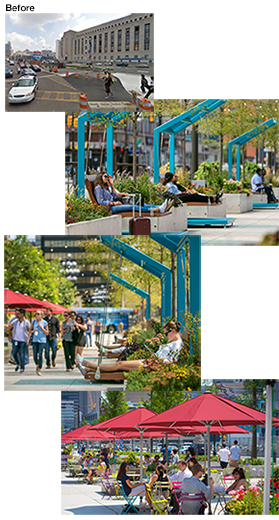
When the University City District in Philadelphia wanted to convert surface parking to a place for pedestrians to sit, read, stroll, and otherwise enjoy the downtown, it started with data. Lots of data. Over time that data-driven approach has lead to The Porch at 30th Street Station becoming one of the most animated public spaces in the city.The district’s process involves:
- Identifying needs by analyzing demand.
- Experimenting with economical and/or temporary improvements.
- Evaluating use.
- Making additions or modifications, as necessary.
“Every day we do data collection, ask people what they want to see, and make those improvements incrementally,” says Nate Hommel, director of planning and design at the District.
“The best way of knowing what people want is to ask them,” adds Seth Budick, senior manager of policy and research at the District.
In looking back at surveys done when The Porch opened, people wanted food, greenery, and protection from extreme conditions like hot sun and noisy traffic. “These are all things we’ve addressed and I would encourage others to just ask people what they want, as well.
“We have a lot of data on the increases in use that we’ve seen since installing these new amenities, which makes it clear that public spaces need a variety of uses to be attractive to users, and in particular, fun and whimsical ones,” Budick says.
The full article appeared in our print edition. To always get the full story, read Downtown Idea Exchange.
Learn more about Downtown Idea Exchange.
